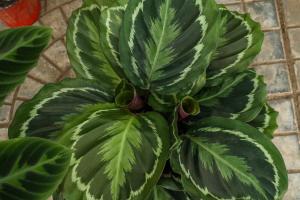Should I Add Worms to My Potted Plants?
If you’re looking for a natural way to improve the health and vitality of your potted plants, adding worms to the mix might seem like a good idea. But is it really worth it? Let’s take a closer look at the benefits and drawbacks of using worms in your planters.
The Benefits of Adding Worms to Potted Plants
Worms can bring a number of benefits to your container garden, including:
Improving soil structure, which allows for better drainage and aeration
Breaking down organic matter, such as leaves and grass clippings, into nutrient-rich castings
Increasing the activity of beneficial bacteria and fungi in the soil
Providing a sustainable source of nutrients for your plants
Reducing the need for chemical fertilizers and pesticides, which can harm both the environment and your plants
The Drawbacks of Using Worms in Potted Plants
While worms can certainly bring a number of benefits to your container garden, there are also some potential downsides to consider. These include:
The risk of overpopulation, which can lead to a lack of oxygen and the buildup of toxins in the soil
The potential for worm escape, which can be messy and unpleasant
The need for appropriate bedding material and regular moisture, both of which can be difficult to maintain in a small container
How to Add Worms to Your Potted Plants Safely
If you decide to add worms to your container garden, it’s important to do so in a safe and responsible manner. Here are some tips to get you started:
Choose the right type of worm. Not all worms are created equal when it comes to container gardening. Red wigglers, for example, are a popular choice because they thrive in small spaces and can consume a lot of organic matter.
Start small. Don’t go overboard with the number of worms you add to your pot. A few dozen should be enough to get started.
Provide appropriate bedding material. This can be shredded newspaper, coconut coir, or another biodegradable material that will help regulate moisture levels.
Water frequently. Worms need a moist environment to thrive, so be sure to water your plants regularly.
Avoid overfeeding. While worms do need a steady supply of food, adding too much organic matter to your container can lead to overpopulation and poor soil health.
Keep an eye out for signs of trouble. If your worms are trying to escape or your soil is starting to smell bad, it’s a sign that something is off.
Conclusion
Overall, adding worms to your potted plants can be a great way to improve soil health and provide a sustainable source of nutrients for your plants. However, it’s important to be aware of the potential drawbacks and to take steps to ensure that your worms are happy and healthy. If you’re up for the challenge, go ahead and give it a try – your plants just might thank you.

 how many times do yo...
how many times do yo... how many planted tre...
how many planted tre... how many pine trees ...
how many pine trees ... how many pecan trees...
how many pecan trees... how many plants comp...
how many plants comp... how many plants can ...
how many plants can ... how many plants and ...
how many plants and ... how many pepper plan...
how many pepper plan...
































